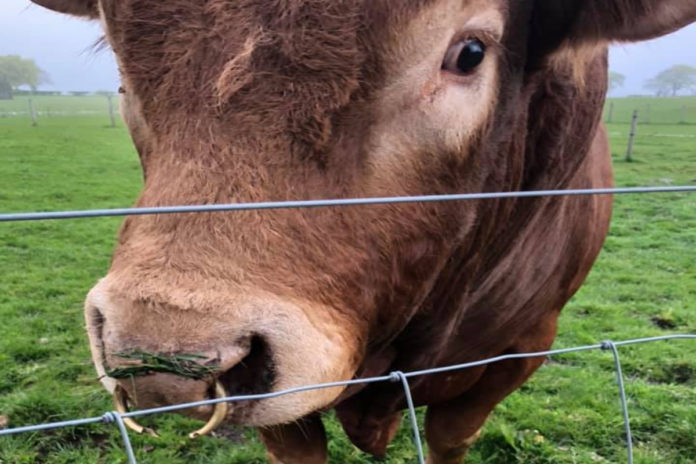“All bulls are potential killers, even seemingly quiet bulls,” an agricultural advisor has stressed in a bid to warn farmers of their ever-present danger on farms.
During Teagasc Sligo Leitrim Donegal’s webinar on cattle breeding: bull safety and fertility, Brendan Caslin advised farmers on the dos and don’ts of handling bulls on farms.
He stressed that bull handlers must be over 18, fit, healthy agile, trained and competent and should treat bulls with caution and respect at all times;
Caslin added that older farmers are most at risk due to reduced mobility and speed, and all bull handlers should be able to “move at their ease with the animal”.
During the state agency’s virtual session, he stressed that bull’s temperaments change as they mature – playful aggression as a yearling to defensive, territorial aggression as a 2 or 3-year-old.
In line with this, Caslin also highlighted how practices from an animal’s early life can directly influence their behaviour as mature bulls and cows.
Capitalising on this, he commented: “As pedigree breeders, we try to encourage children not to pet pedigree calves or any sort of calf for that matter.”
“It is fine; let us say, for example, the calf is 50-60kgs as a suck, they are lovely and playful. But, there are stock bulls out there that reach 1,500-1,600kgs as mature animals.”
“If there were petted as calves, they kind of get used to it. They come up to you for petting as a bull and can do you serious damage.”
“Try to get children out of the habitat of petting calves, especially bull calves or females that you are keeping on as cows,” he stressed.
Caslin’s other key messages on managing bulls:
- Ring all bulls in the nose when they are 10-months-old and examine the ring regularly – “If you are buying a bull, legally, he has to have a ring in him. Try to ring the bull towards the front of the nose and not further back into the nose because you have more control of the bull.”
- From an early age, the bull should learn to associate the presence of people with pleasant things, such as feeding, grooming and exercising, for example;
- In all cases, without exception, send an aggressive bull to the factory – “Do not pass him on to someone else or send him to the mart for breeding; get him killed. If you were in the opposite position of buying a bull. Imagine if you buy one that is bad-tempered and it does damage to you or your family.”
- When you take a bull from a pen, lead using suitable equipment such as head chains, bull poles and leading ropes;
- Never attempt to handle a bull on your own – at least two people should be available when handling a bull (one in front and one behind). Have your well-charged mobile phone with you at all times.
Previous article on That’s Farming on ‘There is no such thing as a quiet stock bull’
Read farming news on That’s Farming





